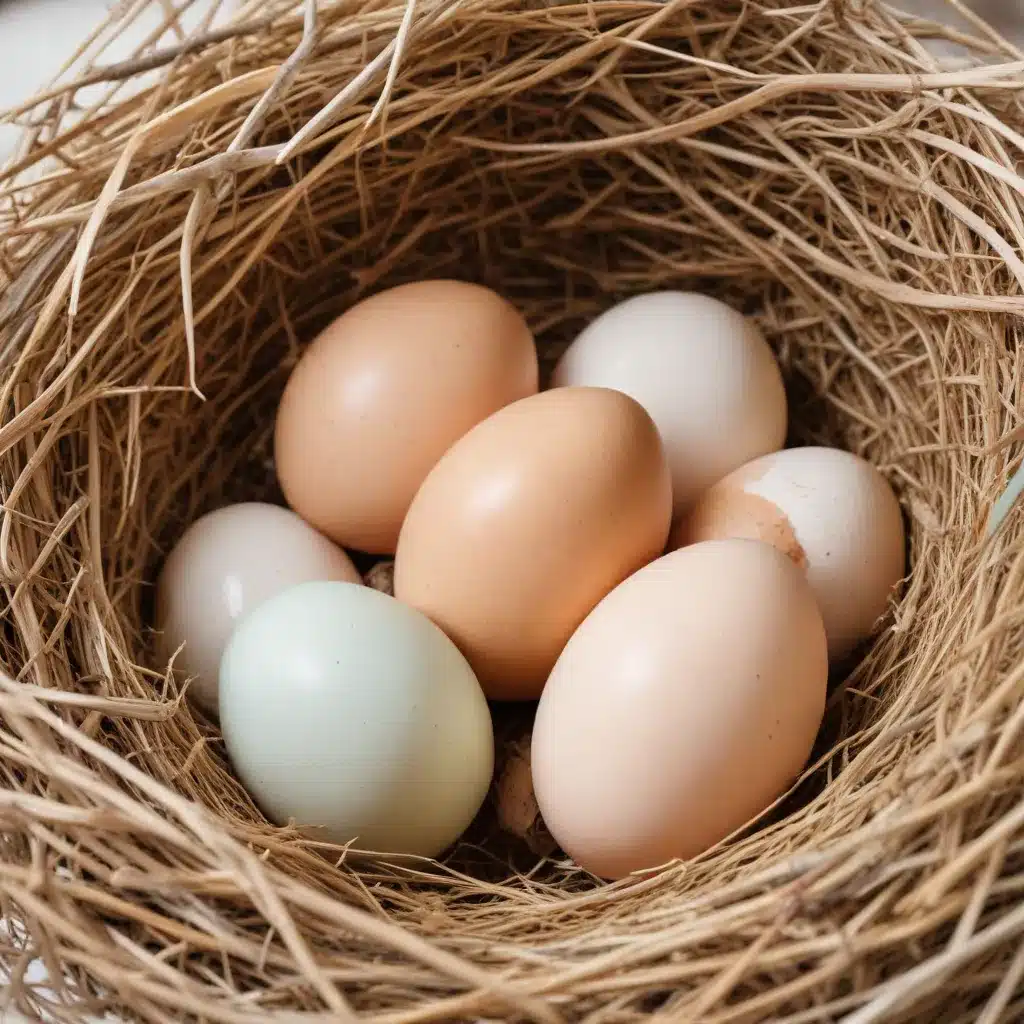
As an experienced avian caretaker and expert in the field, I’m excited to share comprehensive guidance on breeding birds and managing their eggs. Whether you’re a seasoned bird enthusiast or just starting your avian journey, this article will equip you with the knowledge to ensure your feathered friends receive the best possible care.
Avian Breeding Fundamentals
Successful avian breeding starts with understanding the unique characteristics and behaviors of different bird species. From the intricate courtship rituals of passerines to the impressive nesting habits of waterfowl, each avian group has its own set of breeding requirements.
Passerines (Perching Birds)
Passerines, or perching birds, are renowned for their complex courtship displays and nest-building abilities. Species like canaries, finches, and parrots often engage in elaborate song and dance routines to attract mates. Providing them with suitable nesting materials, such as soft fibers and twigs, can encourage natural breeding behaviors.
Waterfowl
Waterfowl, including ducks, geese, and swans, have unique breeding strategies. Many species form strong pair bonds and work together to construct impressive nests, often near water sources. Ensuring access to swimming areas and creating secluded nesting spots can help foster successful waterfowl breeding.
Raptors
Raptors, such as hawks, eagles, and falcons, are captivating breeders. These birds of prey often exhibit impressive aerial displays and may reuse the same nesting sites year after year. Providing ample space and mimicking natural nesting conditions can encourage raptors to breed in captivity.
Regardless of the avian species, understanding their specific breeding behaviors and habitat requirements is crucial for supporting their reproductive success.
Egg Incubation: Crucial Conditions
Once a pair of birds has successfully mated and laid their eggs, the next critical stage is incubation. Maintaining the right temperature, humidity, and ventilation is essential for ensuring healthy embryo development and successful hatching.
Temperature
Optimal incubation temperatures vary by species, but generally range from 37°C (99°F) to 38°C (100.4°F). Consistent temperature control is crucial, as even minor fluctuations can negatively impact the developing embryos.
Humidity
Maintaining the proper humidity levels during incubation is equally important. Ideal humidity levels typically fall between 40% and 60%, with higher humidity required towards the end of the incubation period to support the hatchling’s emergence.
Ventilation
Adequate ventilation is necessary to provide a constant supply of fresh air and remove excess carbon dioxide. Proper air circulation helps regulate temperature and humidity while preventing the buildup of harmful gases.
Regularly monitoring and adjusting these incubation conditions, along with closely observing the eggs, is essential for ensuring a successful hatch.
Egg Monitoring and Intervention
Closely monitoring the eggs throughout the incubation period is crucial for identifying any issues and intervening when necessary.
Candling
Candling, the process of shining a bright light through the egg, allows you to observe the developing embryo and assess the egg’s viability. This technique can be used to detect signs of fertility, embryo growth, and potential problems.
Weight Loss Tracking
Closely monitoring the egg’s weight loss during incubation can provide valuable insights. Healthy eggs typically lose 12-15% of their initial weight, with variations depending on the species and incubation conditions.
Assisted Hatching
In some cases, you may need to provide assisted hatching interventions. This could involve gently helping the hatchling break through the eggshell, known as “pipping,” or using specialized incubator techniques to aid the hatching process.
Vigilant monitoring and timely interventions can significantly improve the odds of successful hatchings and the well-being of the newborn chicks, goslings, or nestlings.
Hatchling Care: Nurturing the Next Generation
Once the eggs have successfully hatched, the next crucial step is providing exceptional care for the delicate hatchlings. Proper brooding, feeding, and health monitoring are essential for ensuring the young birds’ smooth transition to independent life.
Brooding
Maintaining the correct brooding temperature and humidity is crucial for hatchling development. Depending on the species, the optimal brooding temperature can range from 32°C (90°F) for precocial birds like waterfowl to 35°C (95°F) for altricial species like songbirds.
Feeding Regimes
Hatchlings have specific dietary requirements that must be met for their growth and well-being. Carefully research the appropriate feeding schedules, portion sizes, and nutritional content for each avian species to support their development.
Health Monitoring
Closely observing hatchlings for any signs of developmental issues or common ailments is essential. Monitoring milestones like feather growth, weight gain, and behavioral cues can help you identify and address any health concerns promptly.
By providing exceptional care and attention during the hatchling stage, you can ensure the successful rearing of the next generation of your avian flock.
Egg Management Strategies
In addition to the incubation and hatchling care aspects, effective egg management strategies can greatly contribute to the overall success of your avian breeding program.
Egg Preservation
Proper storage conditions, such as maintaining the right temperature and humidity, can help preserve the viability of eggs that are not immediately incubated. Cleaning and disinfecting eggs before storage is also recommended to prevent the spread of potential pathogens.
Assisted Hatching
In some cases, you may need to provide assisted hatching interventions. This could involve gently helping the hatchling break through the eggshell, known as “pipping,” or using specialized incubator techniques to aid the hatching process.
By implementing comprehensive egg management strategies, you can maximize the chances of successful hatchings and ensure the well-being of your avian charges.
Navigating the intricate world of avian breeding and egg management requires a deep understanding of species-specific behaviors, incubation conditions, and hatchling care. By applying the guidance outlined in this article, you’ll be well-equipped to provide your feathered friends with the best possible care and support their reproductive success.
Remember, if you have any specific questions or need additional support, don’t hesitate to reach out to the experts at Mika Birds Farm. Their team of experienced avian caretakers is always ready to offer personalized advice and assistance.
Happy breeding and egg management adventures!


